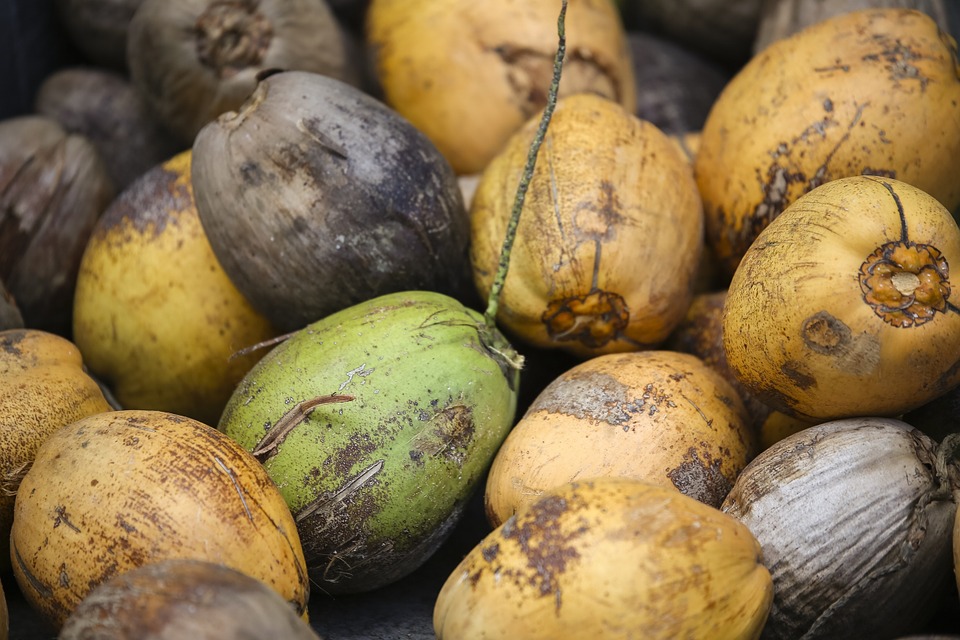
From time immemorial, Sri Lanka has been synonymous with spices. Of course, the little island is most famous for the unique variety of cinnamon grown on its shores. But make no mistake, the country also counts quite a few other spices among its agricultural exports.
In 2015 alone, Sri Lanka’s spice exports amounted to USD 377 million, up from USD 264 million the previous year. Compared to the country’s total export earnings of USD 10.5 billion, the above figures amount to nothing more than a drop in the ocean. On the other hand, those figures say nothing about the country’s proud attachment to its spices, which is why we decided to compile a basic introduction of sorts to the business of exporting Sri Lankan spices.
1. Cinnamon
Arguably Sri Lanka’s most famous export, cinnamon is the island’s premier spice export. Industry insiders classify the spice into two forms, Ceylon cinnamon (Cinnamomum Zeylanicum), and Cassia Cinnamon. Ceylon cinnamon is the costlier variety and is considered to be a much more upmarket product by those in the West. Cassia Cinnamon, on the other hand, is colloquially known as “supermarket cinnamon” and tends to be the cheaper variety.
Cinnamon is exported in its primary form (the rolled bark/stick form) as well as in cut pieces, powder form, and crushed form. Given that Ceylon cinnamon is indigenous to the island, Sri Lanka dominates the market for cinnamon exports. According to data compiled by the Massachusetts Institute of Technology’s Observatory of Economic Complexity, Sri Lanka exported USD 128 million worth of cinnamon in 2014, which accounted for 28% of global cinnamon exports for that year.
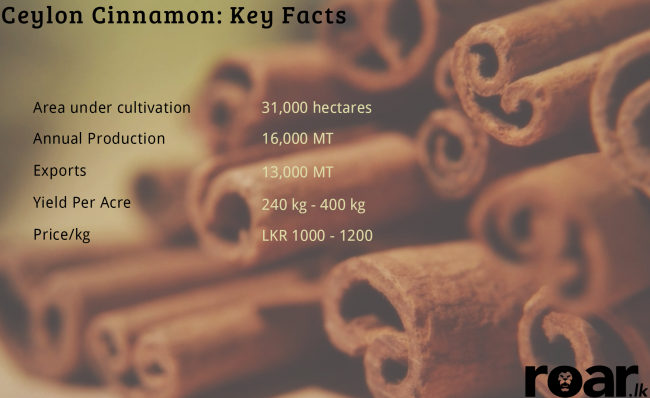
Cinnamon. Image credit: Adam Wita/DeviantArt
- Main Exporters – Sri Lanka (Ceylon Cinnamon), Indonesia, China, and Vietnam (for Cassia cinnamon)
- Major Export Markets: USA, Mexico, Canada, Nicaragua, India, Pakistan, Saudi Arabia, United Arab Emirates
- Sri Lanka’s Market Share – 28% (of the global cinnamon export market, in which Cassia Cinnamon is also included)
2. Pepper
Known as the “King of Spices”, pepper is a spice which has global appeal. It is believed to be one of the earliest commodities traded between the East and the West. At a certain point in history, it was also a form of currency, prized by the wealthiest individuals of society.
The industry recognises Sri Lankan pepper to have a higher piperine content, which gives the pepper a unique pungency, and sometimes superior quality. However, even though the island counts itself among the Top 10 pepper exporters of the world, its exports normally meet less than 2% of global demand. In the last two decades or so, Vietnam has emerged as a major producer, and now largely dominates the market.
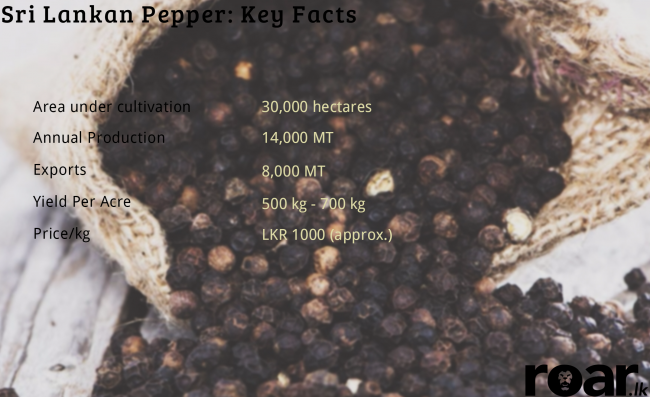
Pepper. Image credit: Adsark.com
- Main Exporters – Vietnam, Brazil, India, Indonesia, China, Malaysia & Sri Lanka
- Major Export Markets – USA, Singapore, Netherlands, Germany, UAE, France, Japan, United Kingdom
- Sri Lanka’s Market Share – 1.7%
3. Nutmeg
The nutmeg plant is indigenous to the Moluccas in Indonesia, but has also been successful as a crop in other Asian countries. Curiously (and interestingly), the nutmeg plant yields two spices, nutmeg and mace. Nutmeg is the “seed” of the tree, while mace refers to the thin, red covering of the seed after it has been dried.
Sri Lanka, as a producer, is not a very dominant force in the market. However, the island is considered one of the major producers of the spice. Of the island’s total annual nutmeg production, 80% comes from within the Kandy district, while the rest can be attributed to the Matale and Kegalle districts.
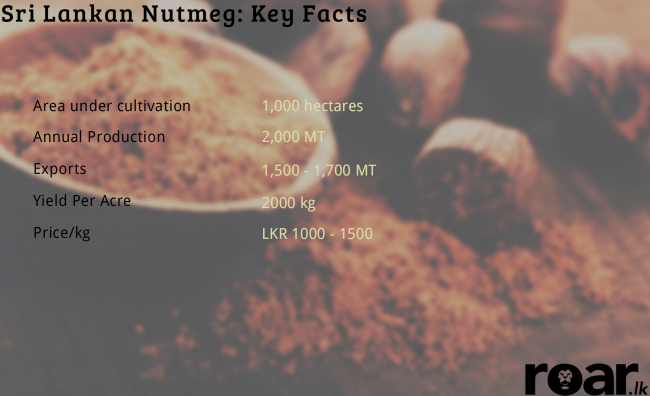
Nutmeg. Image credit: Earth Foods
- Main Exporters – Guatemala, Indonesia, India, Nepal, Sri Lanka, and Vietnam
- Major Export Markets – Saudi Arabia, United Arab Emirates, Germany, Netherlands, United Kingdom, United States
- Sri Lanka’s Market Share – 3.1%
4. Cloves
Another spice native to the Moluccas region in Indonesia, cloves are a mainstay of Indian ayurveda and traditional Chinese medicine. Widely recognised for its warm, sweet aroma, cloves and/or its derivations are used in everything from herbal medicines to perfumes.
Cloves grown in Sri Lanka are believed to have a higher oil content compared to cloves from other parts of the world (clove oil is the single most important derivation of the spice). We’re not quite sure, but this might have something to with the climatic conditions of the Kandy, Kegalle, and Matale districts, where cloves are primarily grown.
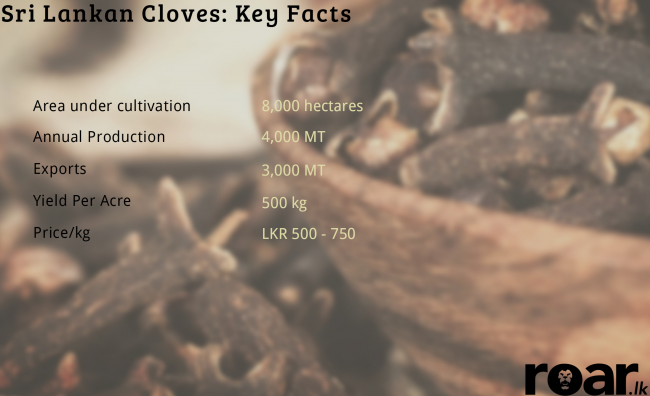
Cloves. Image credit: Style Craze
- Major Exporters – Madagascar, Tanzania, Comoros, Brazil, Indonesia and Sri Lanka
- Major Export Markets – Belgium, Germany, Netherlands, United Arab Emirates, United Kingdom, and France
- Sri Lanka’s Market Share – 4.1%
5. Cardamom
Popularly known as the “Queen of Spices”, cardamom is often amongst the most expensive spices in the world. The spice is very popular in households within the Indian subcontinent, and is also a key ingredient of any good biriyani.
When it comes to Sri Lanka, cardamom is cultivated mostly in the hill country, in areas where the elevation is 600m AMSL (Above Mean Sea Level), such as Kandy, Matale, Kegalle, Ratnapura, and Nuwara Eliya. The spice has also been known to grow in certain parts of the Galle district.
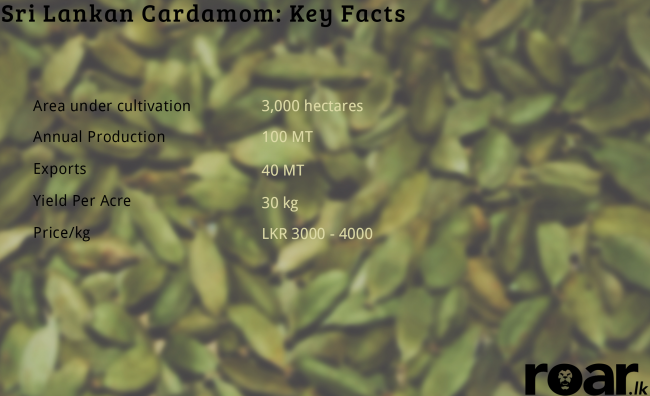
Cardamom. Image credit: Divehi Holdings
- Main Exporters – Guatemala, India, and Nepal
- Main Export Markets – Saudi Arabia, China, UAE, Kuwait, and Jordan
- Sri Lanka’s Market Share – 0.16%
6. Ginger
As a spice that lends its name to everything from biscuits to ale, ginger is something of a celebrity in the world of spices. It is also rather famous as an additive among tea drinkers everywhere, especially in the subcontinent.
Though ginger is cultivated all over Sri Lanka, production tends to be concentrated in Kandy, Colombo, Kurunegala, Gampaha, and Kegalle. According to the Department of Export Agriculture, three main varieties of the spice are grown in the country :
- Local Ginger – Rhizomes are small and the fibrous flesh is somewhat ash-white in color. Ginger taste and aroma is comparatively higher than other species. Largely used for beverages.
- Chinese ginger – Rhizomes are large with watery flesh. Flesh is pale yellow in color. The taste and aroma is low. Largely used for pickles.
- Rangoon ginger- Rhizomes are medium in size and with well-spread finger rhizomes.
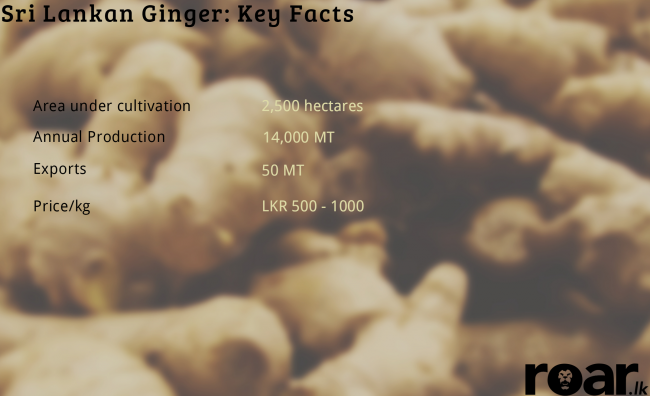
Ginger. Image credit: themindunleashed.com
- Main Exporters – India, China, Thailand, and Indonesia
- Main Export Markets – Japan, UAE, Saudi Arabia, United States, Netherlands, United Kingdom
- Sri Lanka’s Market Share – 0.093%
7. Turmeric
A spice native to South Asia, turmeric was first cultivated as a dye. With the passage of time, people started using it for cosmetic as well as medicinal purposes. In India, where it is popularly referred to as ‘haldi’, the spice is touted as the cure for almost any medical condition. Whether that is true or not, is a different story altogether.
However, in both India and Sri Lanka, turmeric is mainly used as a colouring agent (for cooking, that is). Production of this spice is concentrated in the districts of Kurunegala, Gampaha, Matale, Kandy, and Kalutara.
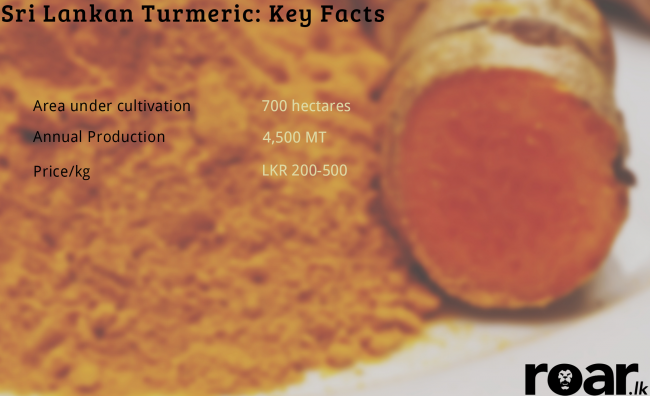
Turmeric. Image credit: turmericlife.com.au
- Main Exporters – India, China, Myanmar, and Indonesia
- Main Export Markets – Japan, Iran, USA, UK, Germany, France, Oman, Bahrain, and Kuwait
- Sri Lanka’s Market Share – 0.20%
8. Vanilla
Though the subcontinent does not consider vanilla a spice, it is normally categorised as one. Its unmistakably sweet aroma makes it a key ingredient in ice cream. In fact, it is the most common flavour of ice cream available in the market. The cultivation of vanilla is very labour intensive, which contributes to its status as one of the most expensive spices in the world, second only to saffron. Of course, the flip side is that prices also tend to be very volatile. Why? Because of the law of Supply and Demand. As Food Business News explains:
The market has even seen higher prices. Vanilla beans went over $500 per kilogram in 2004, said David Vanderwalde, director of Aust & Hachmann, a vanilla bean buyer based in Pointe-Claire, Que., that sells to flavor houses. Growers in other countries besides global leader Madagascar then entered the market, leading to a glut, he said. The market crashed. Prices plunged. Vanilla beans sold for about $20 a kilogram from 2008-10, Mr. Vanderwalde said.
Only Madagascar growing regions could support such low prices for vanilla beans, a labor-intensive crop, Ms. Lochhead said. Cook Flavoring Co. grows its own vanilla beans in South Pacific regions and also buys vanilla beans from Madagascar. Wages in Madagascar run about $1.50 per day while wages in other regions average about $10 per day, she said.
Since vanilla prices are high again, growers in other countries may consider getting back into the vanilla market, but it’s not that easy. After planting vanilla beans, it will take four years to develop a commercial crop, Mr. Rosskam said.
“It’s not a quick fix anywhere,” he said. “It’s not like we can expand production next year.”
In Sri Lanka, vanilla is confined to a home crop, mostly cultivated in people’s backyards. As a result, production is very small.
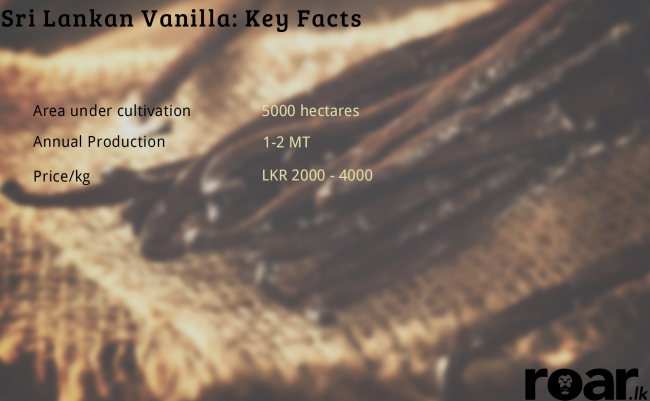
Vanilla. Image credit: Serious Eats
- Main Exporters – Madagascar, Comoros, Mauritius, Uganda, Indonesia, and Mexico
- Main Export Markets: United States, Germany, France, Canada
- Sri Lanka’s Market Share – 0.229%
And with that, it’s a wrap. Hopefully, you’ve learned something new about all those spices sitting quietly on supermarket shelves all around the world. Have we missed anything? Let us know in the comments!
Featured image credit: jakedolosa.tumblr.com



